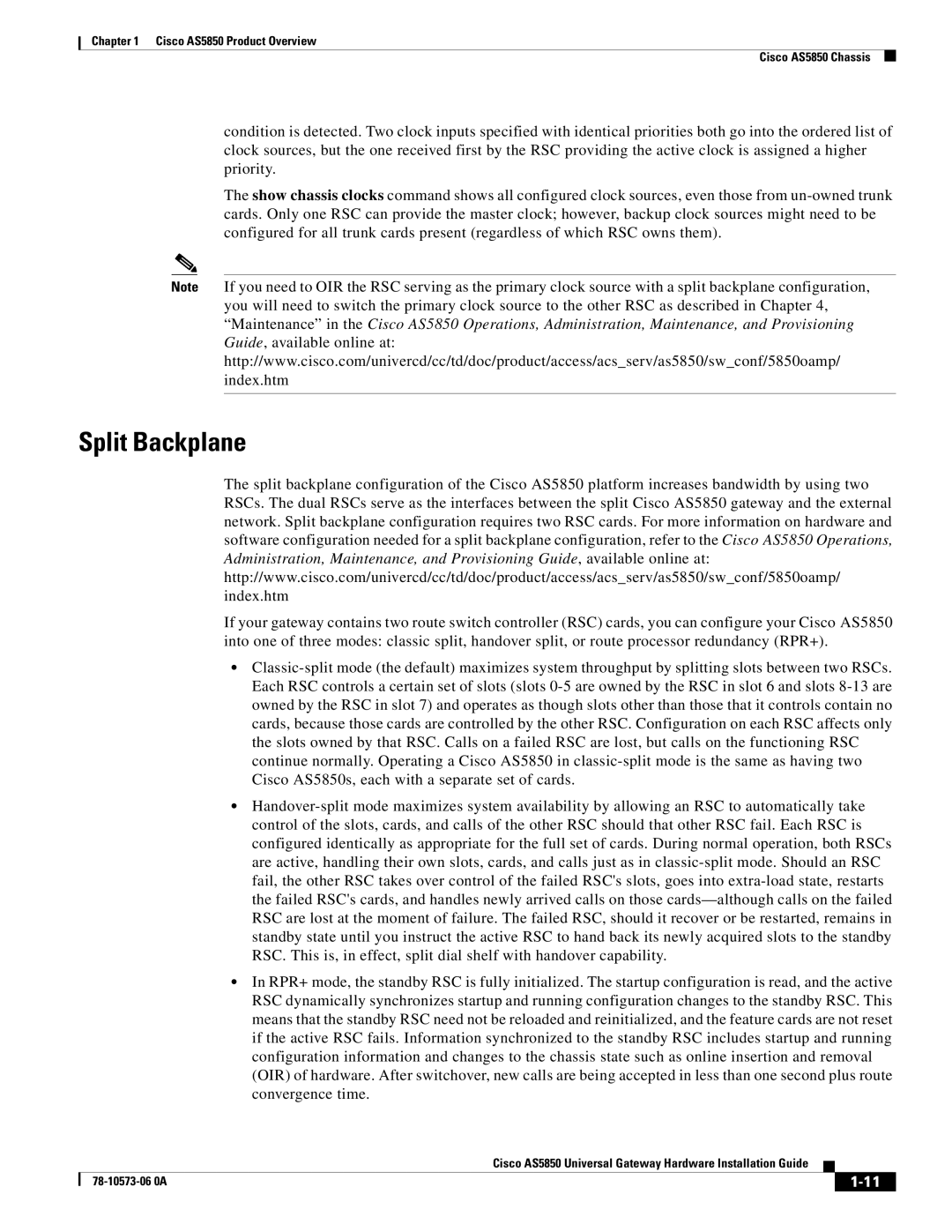
Chapter 1 Cisco AS5850 Product Overview
Cisco AS5850 Chassis
condition is detected. Two clock inputs specified with identical priorities both go into the ordered list of clock sources, but the one received first by the RSC providing the active clock is assigned a higher priority.
The show chassis clocks command shows all configured clock sources, even those from
Note If you need to OIR the RSC serving as the primary clock source with a split backplane configuration, you will need to switch the primary clock source to the other RSC as described in Chapter 4, “Maintenance” in the Cisco AS5850 Operations, Administration, Maintenance, and Provisioning Guide, available online at: http://www.cisco.com/univercd/cc/td/doc/product/access/acs_serv/as5850/sw_conf/5850oamp/ index.htm
Split Backplane
The split backplane configuration of the Cisco AS5850 platform increases bandwidth by using two RSCs. The dual RSCs serve as the interfaces between the split Cisco AS5850 gateway and the external network. Split backplane configuration requires two RSC cards. For more information on hardware and software configuration needed for a split backplane configuration, refer to the Cisco AS5850 Operations, Administration, Maintenance, and Provisioning Guide, available online at: http://www.cisco.com/univercd/cc/td/doc/product/access/acs_serv/as5850/sw_conf/5850oamp/ index.htm
If your gateway contains two route switch controller (RSC) cards, you can configure your Cisco AS5850 into one of three modes: classic split, handover split, or route processor redundancy (RPR+).
•
•
•In RPR+ mode, the standby RSC is fully initialized. The startup configuration is read, and the active RSC dynamically synchronizes startup and running configuration changes to the standby RSC. This means that the standby RSC need not be reloaded and reinitialized, and the feature cards are not reset if the active RSC fails. Information synchronized to the standby RSC includes startup and running configuration information and changes to the chassis state such as online insertion and removal (OIR) of hardware. After switchover, new calls are being accepted in less than one second plus route convergence time.
|
| Cisco AS5850 Universal Gateway Hardware Installation Guide |
|
| |
|
|
| |||
|
|
|
| ||
|
|
|
| ||
